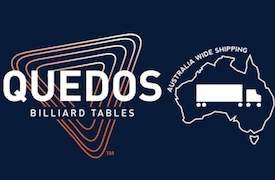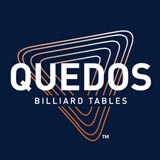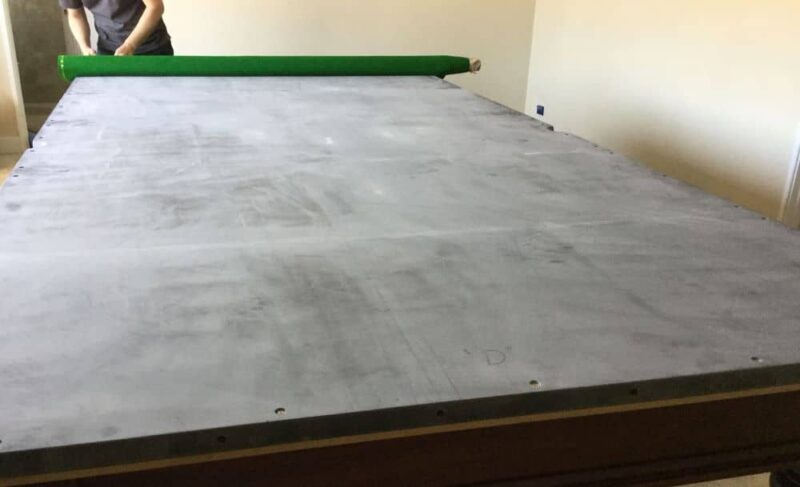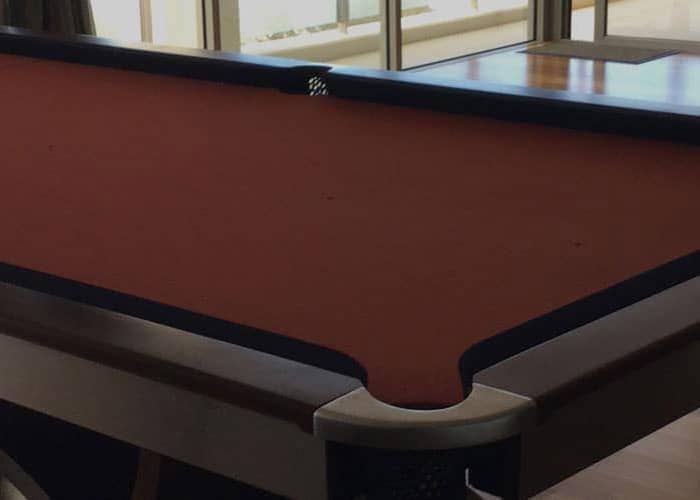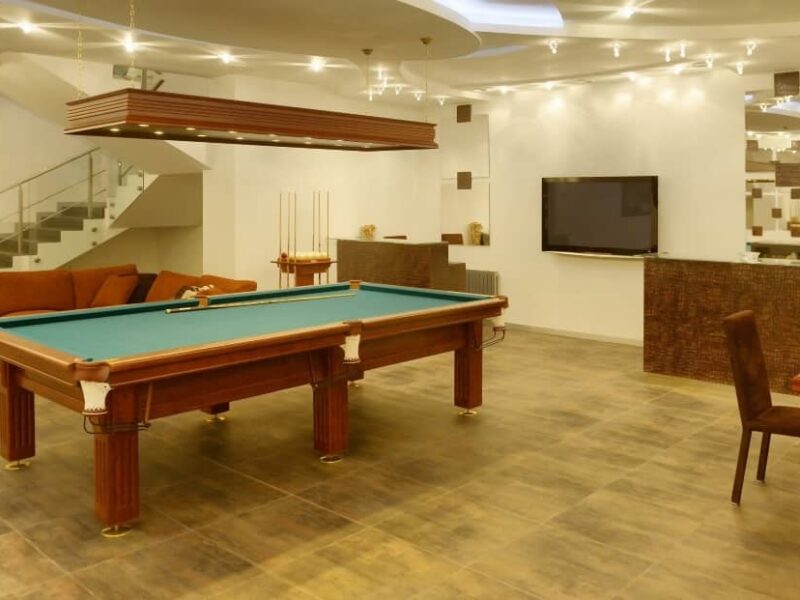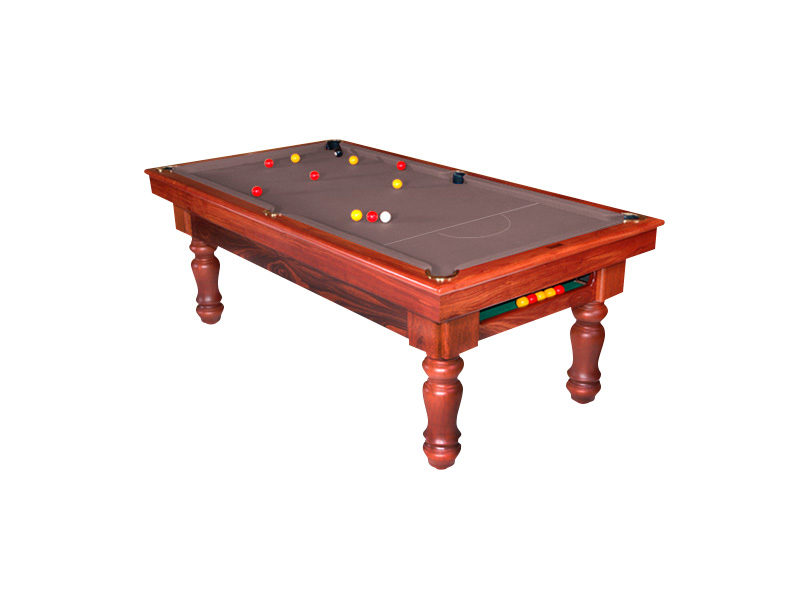
Pool Table and Accessories Quality: You Get What You Pay For
We’ve already talked about how you can buy the best pool table on this blog. But this time, we’re going to focus more on quality. Some people are okay with cheap pool tables and accessories – that is, until they finally get the chance to play on a superior quality pool table with good value accessories.
Pool tables are major investments – almost the same level as a baby grand piano or a grandfather clock. A pool table can go from $900 to $5000 – or more, depending on the slate, cloth, felt, and wood. Plus, you have to purchase accessories, such as a rack for your cues.
Without question, you want your investment to be safe and sound for the years to come. That’s why it’s always a wise choice to go for a quality pool table. Whilst it will cost you more, the appearance, durability, and the whole playing experience are so much better in a quality pool table than a cheap one. It’s safe to say that you get what you pay for when buying pool tables and game accessories.
Here’s what you need to know about pool table quality:
Slate
When buying a pool table, one of your biggest considerations is the slate. There’s no substitute for slate. Yes, you can find other alternatives, such as plywood, slatron, honeycomb, and fibreboard. But they do not match the slate – not even close. Playing pool requires accuracy and smoothness of the table. You can only achieve this with slate.
But what is slate? It’s just a rock or shale formed from clay or volcanic ash. The process takes thousands of years for the raw material to develop. It is later mined, quarried, cut, and finally processed to create smooth, level sheets, ideal for cue sports like pool.
A good slate has the right measurement, particularly the thickness. The standard sizes are:
- ¾ inch
- 1 inch
- 1 ¼ inch
According to the Billiard Congress of America (BCA), the most accurate slate is the one-inch thick product. That’s why professional tournaments and competitions use at least one-inch slate tables. This thickness applies to pool tables, as well. Some dealers, however, will tell you that they are offering a one-inch slate even though the material is only 7/8 inch. Make sure that you’re buying exactly what you’re offered so that you get the most out of the playing experience.
Frame
Although the slate is significant, it’s only as good as the pool table’s wood frame. There’s no way to save the slate from sagging and cracking if there is a lack of support. A good quality table comes with a slate framed with wood. This material is glued to the bottom and usually cross beams for better support.
Frame beams differ based on the size of the slate. For most ¾ inch slates, two cross beams are often enough. However, if the table comes with a larger slate (one inch or bigger), a quad-beam is required, consisting of two cross beams plus another pair of two long beams. Remember to enquire about the number of beams used so that you know if the frame beams match the thickness of the slate.
Cloth or Felt
A good felt is not only durable but also does not hamper speed and traction when playing a game. Modern pool table felt is now popularly made from a blend of nylon and wool. The material is often coated in Teflon. However, some pool tables also use worsted cloth made from wool. It contains fibres, which are first combed before spinning them. This process increases the speed and accuracy of the fabric.
Many players are mostly worried about the durability of the felt. It’s understandable since it is one of the first things that gets damaged after playing on the table for some time. A good quality cloth can last for years, although you still have to do minimal cleaning and maintenance tasks. To make sure that you have a durable felt, you have to check the weight and compare it with the size.
The ounce of weight (or gram) per yard (or metre) is the most common way to distinguish a cloth’s strength and durability. The recommendation is to select felt that’s about 18 (510 grams) to 22 ounces (624 grams) per yard (0.9144 metres), which can help extend the life of the material.
Legs
It’s not a secret that pool tables are heavy. The cabinet alone already accounts for 90% of the total weight of the table. It needs strong legs to support the furniture’s weight. Additionally, players typically lean over when they take shots, putting a little bit of their weight on the table. Some stand against or even sit on the table. It’s not advisable, but it happens from time to time. With all the stress it undergoes, you need to ensure the table has perfect, durable legs that will not surrender to the added weight.
Two types of legs are available:
- Post legs, which are considered the perfect legs
- Two-piece legs, which are often the industry standard
Post legs are the better option because the wood used is in solid pieces, connecting the slate down to the feet of the table. The way it is constructed makes the pool table more reliable than the other choice. It also prevents decline in gameplay experience, which is a common complaint with the industry-standard table legs.
On the other hand, two-piece legs come in two forms:
- Single-anchor system with just one nut and bolt combination, which can loosen as time passes
- Quad-anchor system with four nut and bolt combos, giving more security to the table
Both types of two-piece leg systems connect the table legs to the cabinet using the specific anchor system. The industry standard legs are much more affordable than the post legs. The quad-anchor system is good enough, though, and is not as expensive as post legs.
Rails
The rails are also known as cushions, which are generally made from natural gum or a combination of gum with other raw materials. Synthetic materials are also used, which rely mainly on clay filler to create cushions. Clay is good and helps lower the final price of the table. However, if the pool table comes with clay railings, the age will immediately show. That’s because clay tends to dry out. Additionally, the playing experience will differ as time passes because clay loses its bounce. You will be able to save some money, but you will end up with a dead rail.
If you want a better option, pick a table with natural gum as cushions. This type of cushion provides an easy to manipulate bounce, which can last for as long as you have the table. That’s certainly worth investing in.
Accessories
Now, let’s talk about accessories, which include pool cues or sticks. They are typically provided when purchasing the pool table, although some makers require you to buy your cue stick. Whichever your situation may be, your pool cue has a significant impact on your gameplay. The cue is a tapered piece of wood, which you use to hit the pool balls. Different materials are used these days, including natural maple. You can also find cues made of synthetic materials like fibreglass and carbon fibre.
When buying a pool cue, inspect it carefully. New ones are always in excellent condition, which is why you should veer away from purchasing second-hand sticks. They are often dented and warped. Some are too cheap because they are missing the ferrule or tip. Sure, you can salvage the cue stick by re-tipping or adding slip-ons, but these efforts can get more expensive than simply buying a new stick.
Aside from a cue stick, you also need the following accessories:
- Pool Balls: Like cue sticks, there are plenty of options when it comes to pool balls. The balls you need will depend on the game you prefer to play. For example, the English pool uses red and yellow balls, whilst the American pool has balls with spots and stripes. But if you have different types of balls, you can switch from one variety of games to another. Chipping and discolouration can happen to the balls over time, but it’s easy to buy a replacement. However, you should not mix certain types of balls, such as phenolic resin and polyester. The former can chip the lighter polyester, so be careful when selecting. You should also make sure the balls you buy are the right size for the pockets.
- Bridge Sticks: This stick is not as essential as the cue stick, but you may need it when you cannot reach your desired shot. In some games, you’re required to have at least one foot on the ground when playing. With a bridge, you have a temporary arm extension that helps you hit your shot. When selecting a bridge stick, a good option is a tapered wood shaft that comes with its brass bridgehead.
- Ball Racks: A triangle rack is the most commonly used rack to arrange the balls before the game. You can also choose a diamond rack, which is much easier for some people when playing a nine-ball game.
- Others: You will also need rail brushes, cue chalk, and repair kits for the stick. In most pool accessories, you get what you pay for. For instance, low-end cue chalk can quickly break and apply messily. It’s easier to miscue, unlike a high-end one that is smoother, softer, and more refined. You enjoy a more efficient application, and it also helps you target your shots with finesse.
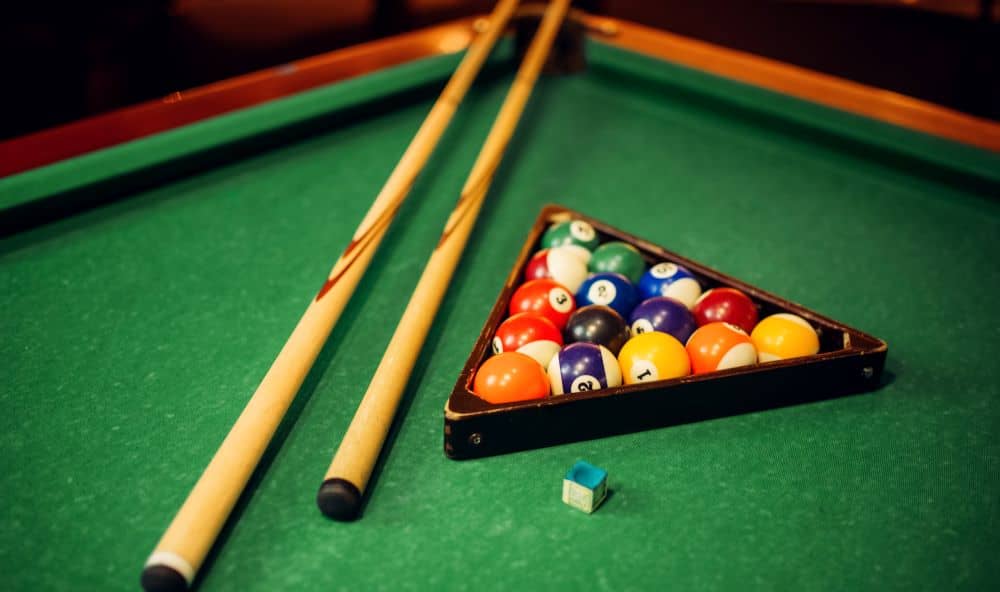
A pool table is an iconic piece in many traditional game rooms. When you show your game room to your friends, you want this centrepiece to be the highlight of the room. An elegant, quality pool table is not just a piece of furniture. It’s where you can play and wind down with your mates after a long, stressful day. It’s also an essential item when you throw a party. You want a good playing experience, even if you’re not a professional player.
It all boils down to the quality of the pool table, cues, and balls, along with other game essentials. And if you want the best quality that your money can buy, Quedos pool tables will not let you down. Contact us and have award-winning builders make your pool table for you.
